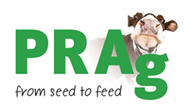Kale

Kale grows best on a medium loam soil with a pH of around 6.5. It needs a well-drained soil which is not compacted. If you grow kale on a very heavy soil, remember that you might have problems strip-grazing in a very wet autumn/winter.
A firm, fine and level seedbed is required and this needs to be achieved with minimum moisture loss (especially on dry soils). Kale seed should be sown between mid-April and early-July. Early-sown crops, which establish well, are more likely to give the highest yields. The seed can be broadcast or sown with a precision or root drill. Under normal conditions, a seed rate of 4-5kg/ha should be adequate. If seedbed conditions are very dry, or the crop is broadcast, then the rate can be increased slightly as an insurance. The target population is 70 plants/m2 whichever sowing method is used.
Kale is a fast-growing crop which will thrive well when provided with plenty of organic material like slurry or farmyard manure. For a soil index of 1, apply 80 units/ha of P and 230 units/ha of K to the seedbed (see page 30). The amount of nitrogen required will depend on the previous cropping and up to 120kg/ha may be needed after a run of cereals. After intensely grazed grass, the rate may fall back to 60kg/ha. The application may be split for early sown crops – 65% in the seedbed and the balance when the crop has reached a height of 15/16cm. For direct-drilled crops, it is wise to increase the nitrogen by up to 25% to boost the crop in the establishment phase.
Several pre-emergence sprays are effective in kale and products are also available for post-emergence control of broad-leaved weeds. In dry years, flea beetles can cause considerable damage to young seedlings. Crops should be monitored regularly. Slugs can be a problem in direct-drilled crops – slug pellets should be considered if appropriate. Rabbits and pigeons can also pose a threat and again, some specific attempts at control may be necessary.
The traditional method is to utilise the crop fresh, either by strip or zero grazing. Strip graze behind an electric fence which is best moved once or twice a day. Allow a space of 3 metres per cow and an area of grass for the animals to run-back on. Zero grazing – cutting the crop with a forage harvester will help secure the maximum use of this excellent green feed with minimal waste. The kale can then be fed from a forage box or from behind a barrier. Experts suggest that kale should provide no more than 30-35% of the daily dry matter intake for dairy cows. Outerwintering – kale has been used very successfully in outwintering systems.
Sowing period April – early July
Direct drill 4-5kg/ha (1-2kg/ acre),
Natural seed Broadcast 8kg/ha (3kg/acre)
Please call the office on 01437 781780 for further advice and to purchase the right variety of kale for you.
